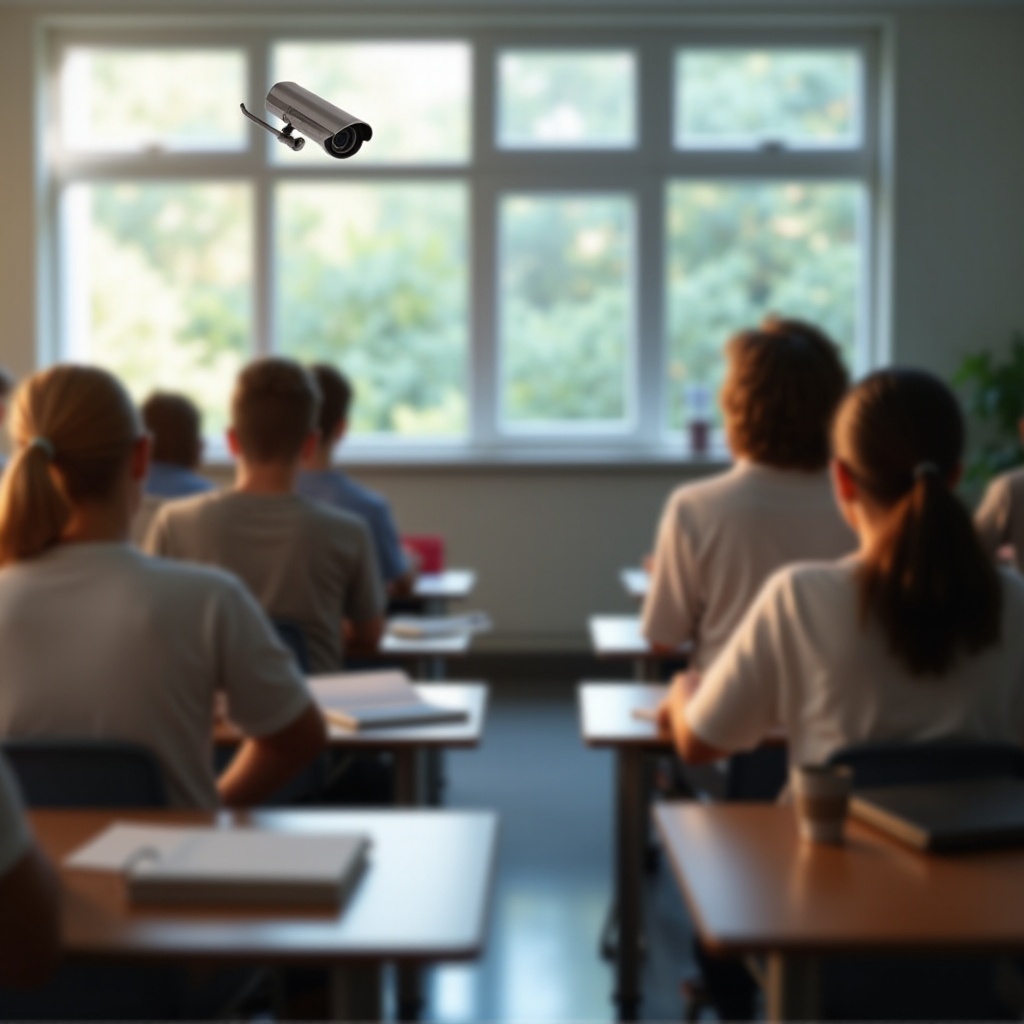Introduction
Is it legal to have cameras in classrooms? This question has sparked significant debate and concern among educators, parents, and legal entities. Classroom surveillance can serve multiple purposes, from enhancing safety to monitoring educational environments. However, understanding the legalities, ethical considerations, and practical implications is crucial for schools considering this route. Let’s delve into these aspects in detail, examining the legal landscape, ethical dilemmas, and real-world implementations.

The Legal Landscape of Cameras in Classrooms
To properly address the question, ‘is it legal to have cameras in classrooms,’ it’s essential to first examine the overarching legal guidelines that schools must comply with. These guidelines vary from federal to state-specific laws, each of which provides a unique viewpoint on classroom surveillance.
Federal Laws and Regulations
When considering cameras in classrooms, federal laws primarily focus on privacy rights. The Family Educational Rights and Privacy Act (FERPA) protects the privacy of student education records, but it doesn’t explicitly mention surveillance cameras. Thus, while FERPA sets a standard for handling student information, it leaves room for interpretation regarding visual monitoring. Additionally, The Fourth Amendment protects against unreasonable searches and seizures, but its application in schools can be complex, balancing student rights with institutional needs.
State-Specific Laws
State regulations often offer clearer guidelines. For instance, Texas law explicitly permits cameras in special education classrooms, albeit with strict consent requirements. California, known for its stringent privacy laws, requires transparency and can set limits on camera placement to avoid capturing unnecessary personal information. Variations in state laws mean schools must consult local legislation and ensure compliance with the respective legal frameworks.
Recent Legal Cases and Precedents
Recent legal cases have influenced the use of cameras in schools. For example, in Doe v. School Board of Liberty County, the court ruled in favor of classroom cameras for safety but emphasized consent and the limited scope of surveillance. Such precedents offer insights into judicial leanings and the importance of transparent, consent-based practices.
Ethical Considerations of Classroom Surveillance
Having reviewed the legal landscape, it’s important to consider the ethical ramifications. These considerations play a crucial role in shaping policies and practices regarding classroom surveillance.
Privacy Concerns for Students and Teachers
Privacy remains a significant concern in classroom surveillance debates. Cameras can make both students and teachers feel constantly monitored, potentially impacting their behavior and creating discomfort. There are worries that surveillance could infringe on the personal space of students and teachers, raising questions about the balance between privacy and security.
Transparency and Consent
Transparency and consent are essential to ethically implementing cameras in classrooms. Schools must clearly communicate their intentions, the scope of surveillance, and how the data will be used and stored. Obtaining consent from both parents and teachers can help mitigate potential ethical conflicts and foster an environment of trust and cooperation.
Pros and Cons of Surveillance
Weighing the pros and cons of classroom cameras helps in making informed decisions.
- Pros:
- Enhanced safety and security
- Reduced bullying and misconduct
-
Objective evaluation of teaching practices
-
Cons:
- Privacy infringement
- High installation and maintenance costs
- Potential abuse or misuse of footage

Practical Applications and Implications
Practical applications of classroom cameras offer a real-world perspective on how surveillance can be beneficial, while also pointing out certain challenges that come with implementation.
Enhancing Safety and Security
Classroom cameras can significantly enhance safety by deterring bullying and misconduct. They provide a record of incidents that can aid in investigations and help maintain a secure environment. The presence of cameras can act as a preventive measure, giving peace of mind to students, parents, and staff.
Monitoring and Evaluation
Surveillance cameras serve as a tool for monitoring and evaluating teaching practices and student engagement. Administrators can use footage to identify effective teaching strategies and areas needing improvement. This objective approach promotes accountability and helps in professional development for teachers.
Deterrence and Behavioral Impact
The deterrent effect of cameras can positively impact student behavior. Knowing they are being monitored may discourage students from engaging in disruptive activities. However, it’s essential to balance this with the risk of creating a restrictive environment that hampers the natural flow of educational interactions.

Case Studies and Real-World Examples
Lastly, examining case studies and real-world examples helps to provide a comprehensive view of classroom surveillance in practice. These examples demonstrate both successful implementations and challenges faced.
Successful Implementations
In some schools, cameras have been successfully implemented with positive results. For instance, certain districts in Texas have reported a decrease in bullying and improved behavioral standards. Transparency and clear communication were key in these successful cases, ensuring the community’s support and compliance.
Controversies and Challenges
Conversely, some implementations have faced backlash. In New York, the use of cameras in classrooms led to protests over privacy concerns and inadequate consent procedures. These challenges highlight the importance of thorough planning and community involvement in the decision-making process.
Conclusion
The legality of having cameras in classrooms is nuanced, varying by federal and state laws, and must address ethical considerations and practical implications. Schools must navigate these complexities carefully to create a secure yet respectful educational environment.
Frequently Asked Questions
Do schools need consent to install cameras in classrooms?
Yes, most states require schools to obtain consent from parents and teachers before installing cameras to ensure respect for privacy and compliance with legal standards.
Are there any federal laws that prohibit cameras in classrooms?
There are no federal laws that explicitly prohibit cameras in classrooms, but regulations like FERPA and the Fourth Amendment guide how surveillance should be conducted, focusing on privacy and protection against unreasonable searches.
How do schools address privacy concerns with classroom cameras?
Schools address privacy concerns by being transparent about their surveillance policies, obtaining necessary consent, limiting camera placements to non-intrusive areas, and ensuring secure data handling practices.
